Child marriage is a reality for millions of girls across the globe — the ‘I Don’t’ Project
– By Natalia Otero
Almost 700 million women worldwide got married before turning 18, some as young as 10 or 11, and 15 million more join them each year. Some are coerced; others enter into marriage voluntarily for reasons of tradition, culture or economic necessity. But the outcomes are similar: Dropping out of school, social isolation, early pregnancy, maternal mortality and limited future opportunities are common consequences.
Abaynesh, Ramgani and Nayane are three girls whose stories illustrate the causes and effects of early unions across different cultures. Their stories, their lives, are only three of many.
_____
Abaynesh
“Once married, I tried to continue my studies, but my family and my in-laws decided I shouldn’t study anymore,” says Abaynesh, 14, as she paces the hut of wood, sun-dried brick and straw that she shares with her husband and two mules in Gindero, which is in the Amhara region of Ethiopia.

Surrounded by fields, with high green mountains in the distance and a night lit only by the stars, this is a lonely, timeless place. There are no neighbors, running water, electricity or clocks.
The sun has not yet risen, and Abaynesh is ready to go to the river to get water. She carries a 20-liter drum on her back, and neither its weight nor her advanced pregnancy slows her.
Her in-laws changed her name to Jemata when she married three years ago. She wasn’t happy with the change but accepted it as in keeping with tradition. “When I was little, I had very good grades. I wanted to be a doctor,” she says, looking back on her abbreviated childhood with nostalgia.
Ethiopia has about 1.9 million women aged 20 to 24 who were married before 18, placing it fifth in the world. It also ranks second in the number of women who have undergone genital mutilation, which has affected 23.8 million women, or 74 percent of the female population between 15 and 49 years old, according to UNICEF.
Abaynesh contributes to both statistics. Her inner labia, or labia minora, were cut a few days after she was born, a practice common in more than 20 countries, mostly in Africa.
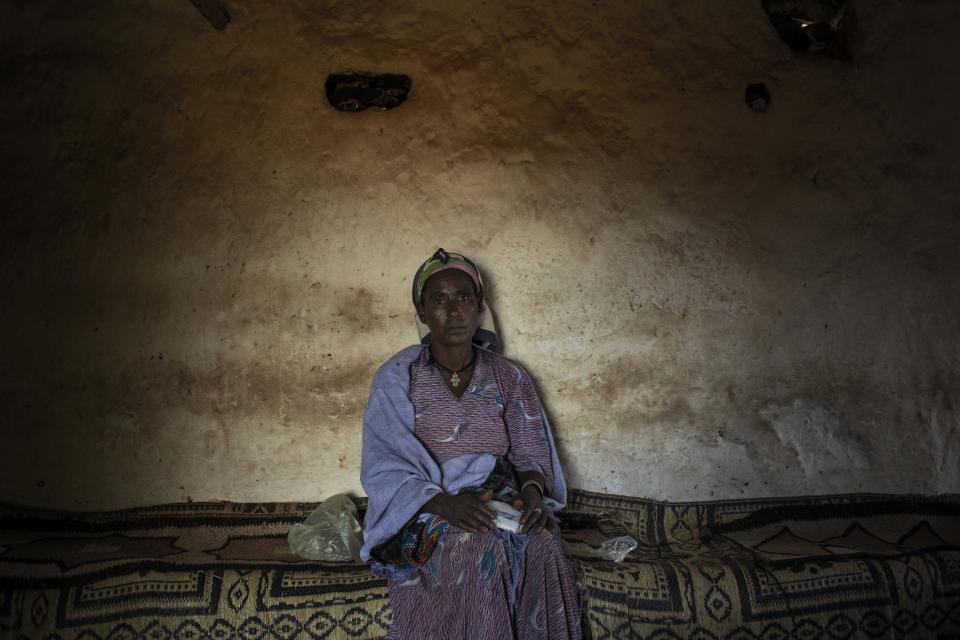
Genital mutilation and child marriage are related and stem from some of the same social conditions: gender inequality, a patriarchal culture and the desire to control the sexual freedom of women. Genital mutilation is presented as a way to give women characteristics valued by their society.
Abaynesh was not mutilated to guarantee her purity, nor to make intercourse less pleasurable, but to “facilitate male penetration once married,” explains Mesel Nigusie, who has done female circumcision for the last 28 years. “It must be done before girls reach 15 days old because the body is stronger and heals faster,” she says, adding that the wound heals and stops hurting within eight to 10 days.
Abaynesh’s father-in-law says that families prefer circumcised women for cultural reasons. He believes that girls who have undergone the procedure adapt better to their husband’s family, are less rebellious and become better wives.
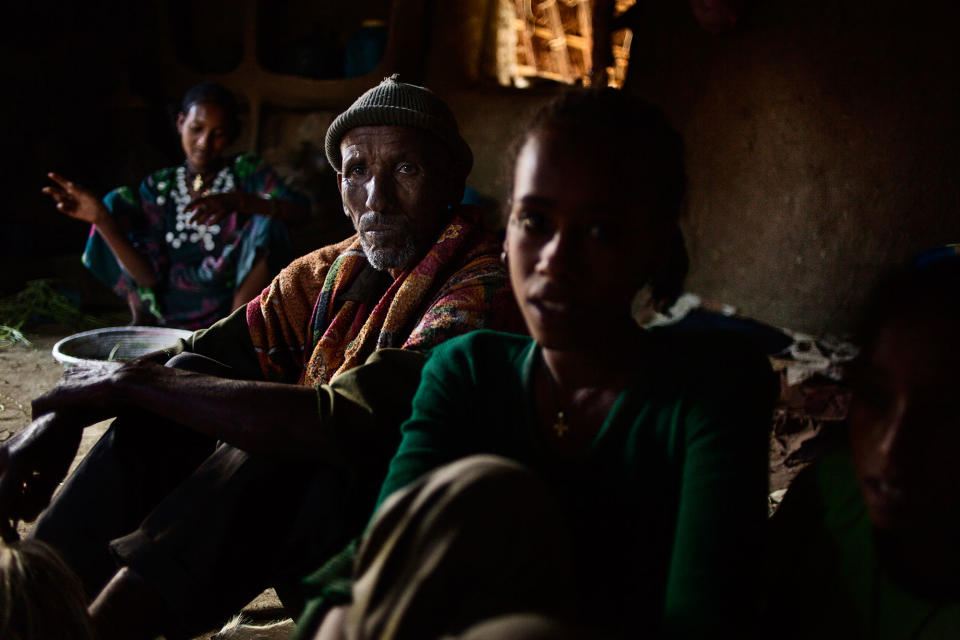
The diversity of cultures and ethnic groups in Ethiopia makes it difficult to generalize about sexual and marriage patterns. Ethiopian girls often are married off young as part of an agreement between the two families. But sometimes, if the bride’s family refuses the proposal, the man kidnaps his would-be bride, and by tradition the girl’s family must accept the union.
Abaynesh’s eyes reflect the exhaustion that her body hides. She prepares coffee after dinner, crouching in the middle of her in-laws’ room. She speaks hardly a word and takes no part in the family’s conversation around her. This will be her routine for the foreseeable future as her dream of becoming a doctor fades away.
Ramgani
“I want to finish my studies,” says Ramgani, 18, with the conviction of someone who is planning on changing her luck and maybe the luck of other girls and women like her.
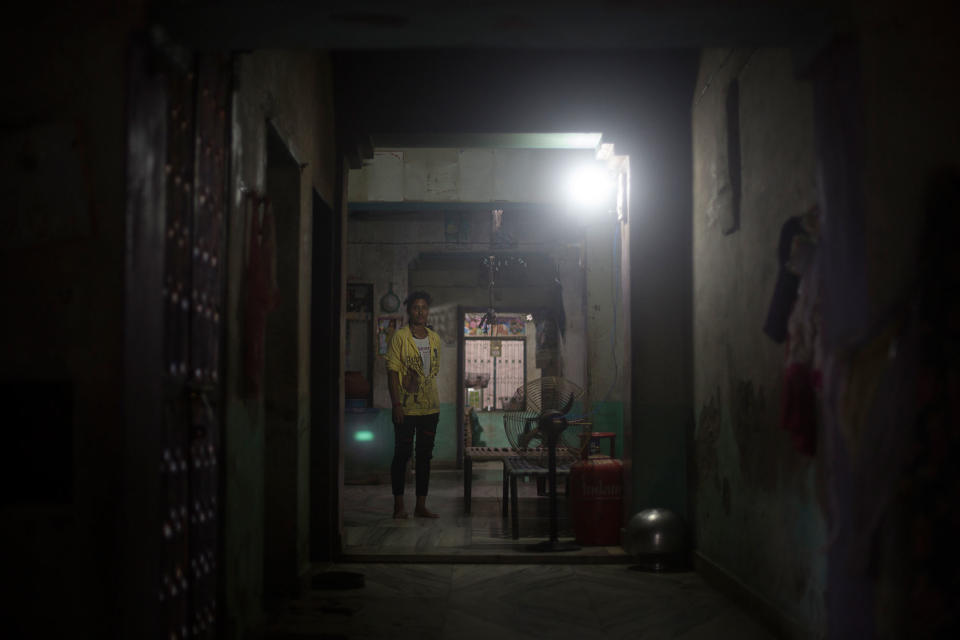
She is late to school because her chores have kept her busy longer than usual. She bursts into the playground with energy and raises a cloud of dust when she runs toward the fountain. Ramgani is not wearing the female uniform of her school; she wears the same white trousers as the boys. Her body language conveys a certainty and strength that are at odds with her delicate and shy speech.
Ramgani was married as a young girl, but the marriage became “effective” when she was 14 and her husband’s family made her come live with them. Her story is one of a continuing struggle to escape her destiny as a woman in a rural village in Bhilwara District, in the state of Rajasthan, India.
According to figures from UNICEF, 27 million Indian women between 20 and 24 were married before they turned 18. In Rajasthan, among women in the same age bracket, 65 percent were married as children.
But Kailash Brijwasi, director of the NGO Jatan Sansthan, which has worked in India for the past 15 years to end this practice, says, “These statistics only gather registered data by the government,” and the “official number is lower than reality.”
Three-quarters of the women in Rajasthan live outside of cities, and 55 percent of those are illiterate.
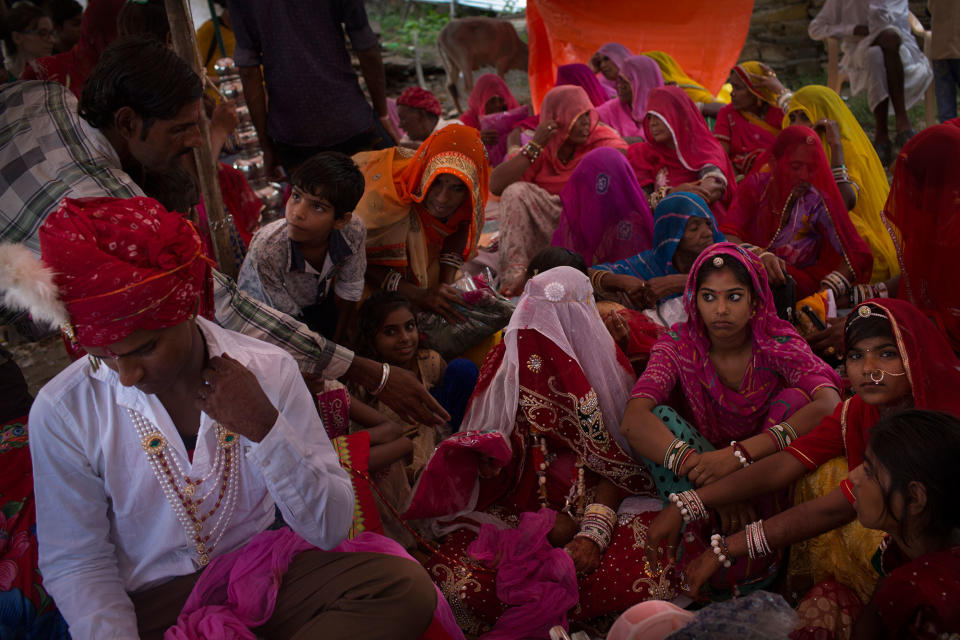
Ramgani fights not to become one of them. She bears the weight of being a woman in a society that is deeply patriarchal and is also subject to rules of caste. Ramgani is part of the Jat caste. Married Jat women in the countryside do not sit at the same level as their husbands or male relatives. If a man sits on a chair, a woman must sit on the ground. If a man is standing, a woman must do the same until he leaves the room.
The gender roles and caste system are deeply rooted in society, abetted by weak legal protections, an overwhelmingly male power structure, and the precarious economic conditions of a large part of the population. Those factors also conspire to make child marriages common.
Ramgani is the fifth of nine sisters, all of whom were married in ceremonies on consecutive days. In India, the bride’s family provides the dowry and hosts the ceremony. To save money, it is common to marry several daughters at the same time to men from the same family, which results in younger brides.
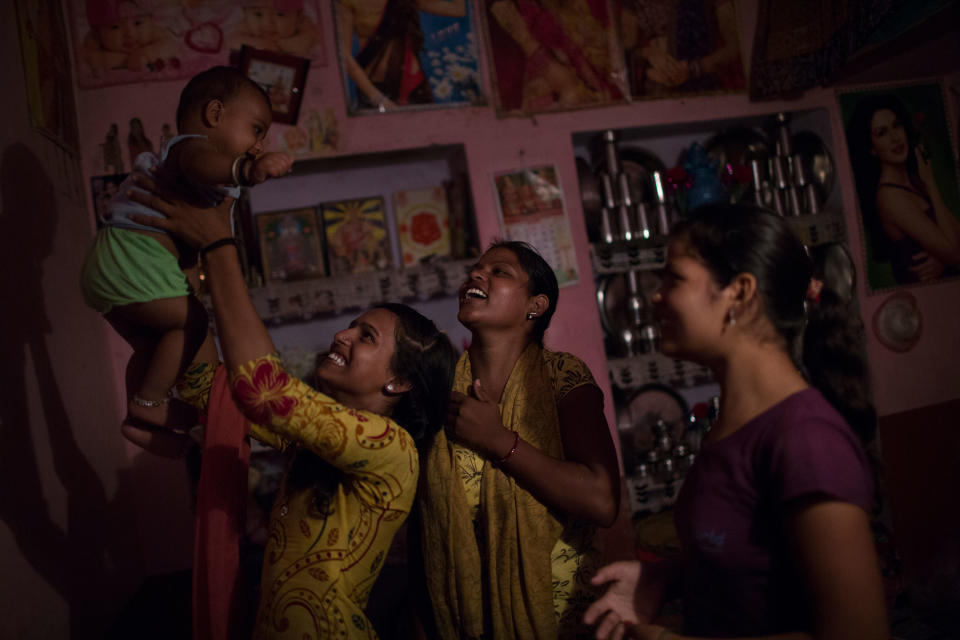
Although the girls are paired with their husbands when they are very young, they usually do not leave their parents’ house until they reach puberty. Therefore, the wedding for most is a distant memory by the time they are claimed by the in-laws. One of Ramgani’s younger sisters, who is 11 years old, already spends time at her in-laws’.
Once they leave the family home, girls take over the house chores in their new home, and few are allowed to continue their education. Chandra Ramesh, a teacher at the GGSS Kahla School in Bhilwara, Rajasthan, says that only 30 percent of these girls go back to their studies.
Ramgani had to leave school when she moved in with her husband’s family, but eventually, with the help of Jatan Sansthan, she persuaded her father to bring her home so that she could continue in school. She now divides her time between her family home and her in-laws, but she is pressured by both families to return to her husband. She frequently fights with her father about her insistence on continuing her studies. Nevertheless, she has managed to stay in school.
Arti Khatik, 16, has not had the same luck. The mother of a 10-month-old, she was married when she was around 7, and six or seven years later she moved to her husband’s house. She explains how she was forced to lose her virginity at 14. Now she dreams of a life away from a husband who drinks and doesn’t provide for their child, except when he forces her to have sex, saying, “Shut up, I’ll give you money for the baby.”
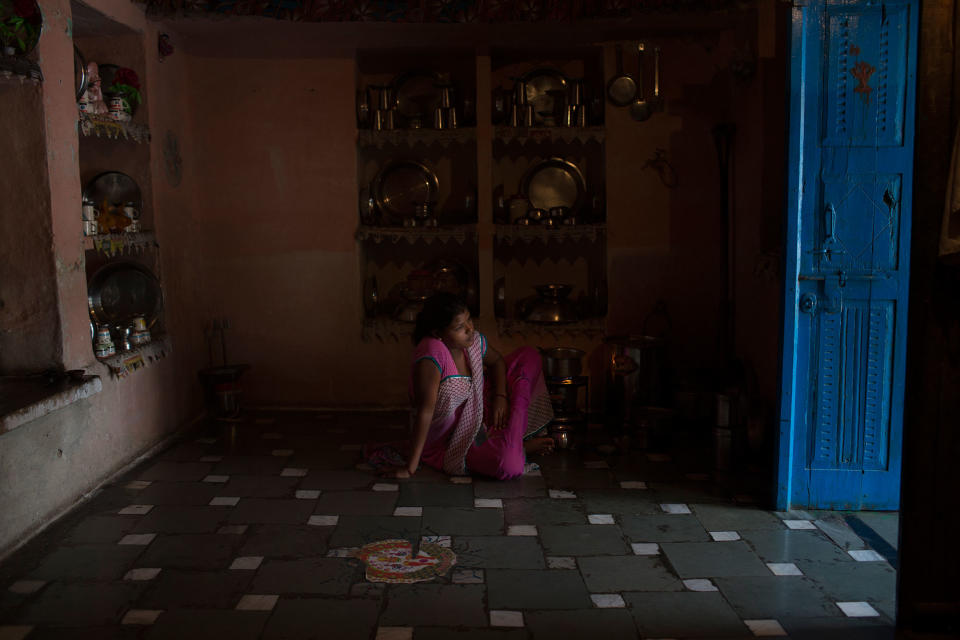
Indian legislation is strict on paper. Any union in which the woman is under 18 or the man is under 21 is considered illegal. However, the government lacks the resources to enforce the law, according to Paresh Ram Bhali, one of the government representatives in Bhilwara District, and so the practice of child marriage continues.
Back home, Ramgani straddles the motorbike that a family member lent her and smiles shyly. “If they make me go back to my husband, I will escape,” she says, almost whispering.
Nayane
Nayane, 15, and her twin sister, Nayara, have their eyes glued to their phones, which vibrate with each incoming message. Nayara hasn’t left the house in three months. The drug-trafficking gang controlling her community imposed this punishment, along with a beating that landed her in the hospital, for having a forbidden relationship with a man from a rival group. Nayane keeps her company during her confinement.
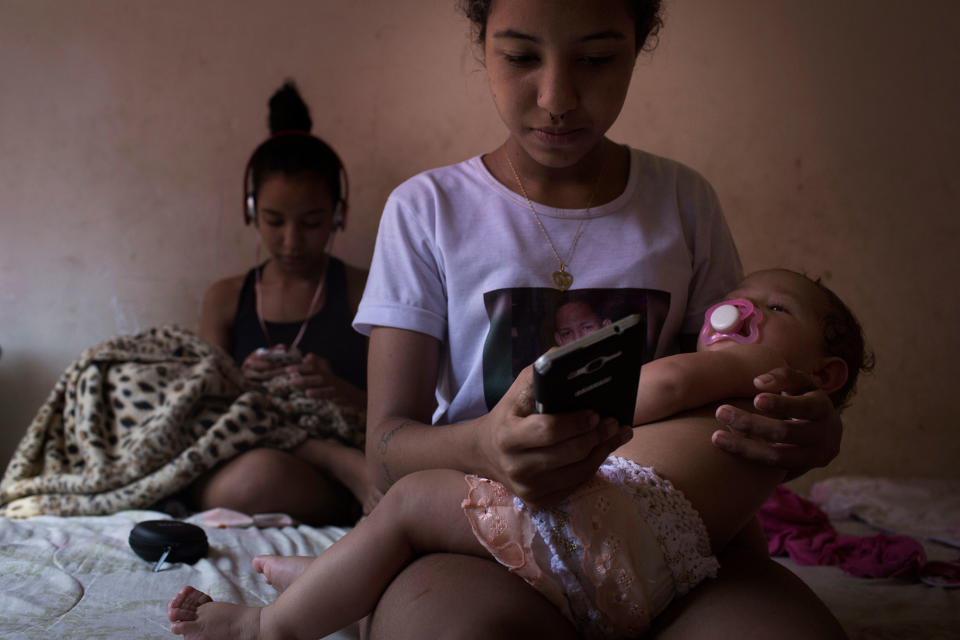
They are on the bed in a small faded room in a house in Parque União, in the Maré favela complex, north of Rio de Janeiro. In Nayane’s lap is Ana Sophia, her 10-month-old daughter.
Neither of the twins goes to school. Nayane is getting ready to go to a funk-music party like the one where she met the father of her daughter. The young mother has his photo on her T-shirt. He died six months ago. He was involved in drug trafficking and was shot in a police raid. Nayane was never married to him.
Brazil ranks fourth worldwide in the number of child marriages. Almost 1 million women between ages 20 and 24 were married before 15, and 3 million were married before 18. The minimum age to get married is 16, with parental consent. But in certain circumstances, including pregnancy, this rule can be suspended.
Brazil differs from other countries in that the young women involved are often already pregnant and consent to marriage rather than being forced into it — and the unions may be unofficial and unrecorded.
Girls get married or initiate a stable cohabitation with family encouragement after an unplanned pregnancy because of social pressure, as described in a study by the NGO Promundo.

Vanessa Fonseca, project coordinator of Promundo, highlights two main reasons why girls enter into an early marriage in Brazil: financial stability and freedom in a society where girls living at home are often subject to very strict family control. And many of Nayane’s friends decided to live with their partners, leaving their families and their rules.
Unlike brides in some other countries, such as India or Ethiopia, these young girls are not forced into unions. “They get married and ‘separated’ when they think they have to,” says Fonseca. However, they can suffer the same consequences: domestic violence, dropping out of school, diminished job prospects and maternal health problems.
It is a problem often overlooked by the government. Some time ago, Christiane Pereira, who lives in the same favela as Nayane, began a relationship and married very young after getting pregnant with her first daughter, born when she was 16. Now, divorced from that man and the mother of two other girls, she sees this pattern repeating among other girls in her neighborhood who seek to escape abuse and lack of affection at home.

Nayane’s friends have come to pick her up for the dance. With braces on their teeth and too much makeup on their faces, they play at being grownups, a game that for many will end with a pregnancy and a life of drudgery.
_____
Photography by Rafael Fabrés and José Colón/MeMo
Watch the full video interviews from Ethiopia, India and Brazil, edited by Jaime Asensio.
“I Don’t” Project was funded by the European Journalism Centre.
_____
Read more from Yahoo News:
Immigrant doctors — and their patients — fear impact of travel ban
Ryan presses case for health care bill in face of ‘frustration’ and ‘confusion’
Disconnected youth: Growing up jobless and rootless in rural America
Photos: Protesting the Dakota Access pipeline, Native Americans march on Washington, D.C.


